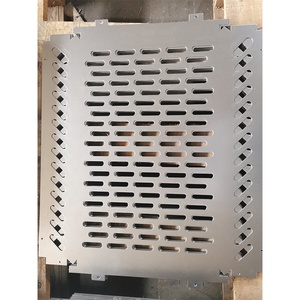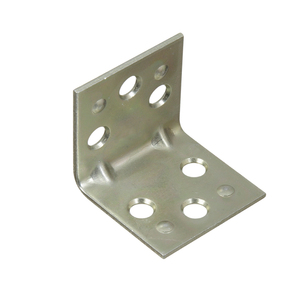
All categories
Featured selections
Trade Assurance
Buyer Central
Help Center
Get the app
Become a supplier

(30025 products available)























Chrome metallization equipment refers to the machinery used to deposit a layer of chrome on an object or surface for protective, decorative, or functional purposes. Usually, this equipment is employed with complementary tools as a part of a chrome plating line.
Vacuum Coating Machines:
Industrial-grade vacuum metallization equipment is intended to utilize a vacuum chamber to deposit chrome or other metallic coatings on diverse items through physical or chemical vapor deposition. These machines are generally used to create thin, even, and well-adhered chrome coatings on various substrates, including plastics and metals. The precise control over the coating thickness and composition offered by these machines makes them suitable for applications where the functionality and appearance of the coated object are of paramount importance. The use of vacuum conditions enhances the quality of the chrome deposit and allows for the coating of complex shapes.
Electroplating Units:
Electroplating equipment for chrome is a crucial element in the process of coating objects with a layer of chrome through an electrochemical procedure. Objects made of materials like metal or plastic are first prepared and then submerged in a solution of electrolyte. Electrodes are also used, with the positively charged electrode attracting the negatively charged item, where a chemical reaction occurs, depositing a layer of chromium. Chrome electroplating equipment is used in various industries, such as automotive, bathroom fittings, cutlery, and marketing, to improve the surface qualities of products and bestow them with better durability, corrosion resistance, and a glossy appearance.
Hydraulic Pump Plating Attachment:
This is a portable piece of chrome metallization equipment that is commonly used for chrome plating repair services or small-scale chrome plating applications. It includes a hydraulic pump as well as a metallization gun. The hydraulic pump may be driven by a hydraulic motor that is linked to a hydraulic cylinder. The job to be plated is positioned in a container and needs to be thoroughly degreased before carrying out any further steps in the plating process. Container electrolyte chrome plating involves immersively or partially plating an object by putting it in a container or tub filled with electrolyte solution.
Coating Thickness
Chrome metallization equipment can produce coatings with varying thicknesses, typically between 100 nm and 2μm, depending on the intended application and substrate surface characteristics.
Coating Uniformity
Chrome coatings should have consistent thickness and brightness across the entire surface, including complex geometries and edges.
Production Speed
The maximum speed at which a machine can produce a product, which may be as low as 3-6 seconds per square foot, depending on the machine's size and capability, as well as the substrate material's characteristics.
Vacuum Levels
Chrome metallization equipment operates at varying vacuum levels, typically between 10^−2 and 10^−6 Torr, with a high vacuum required to evaporate the chrome from the source and deposit it onto the substrate.
Power Requirements
The power demand for chrome metallization, which may vary based on the device's dimensions, capacity, and operational circumstances, is contingent upon the volume of chrome that needs to be vaporized and the electrical current necessary to create the vacuum within the chamber.
Consider the following when it comes to the maintenance of chrome vacuum metallization equipment:
Check coolant usage and replenish as needed. Inspect the water chiller to ensure it is functioning correctly, including the checking of water flow and temperatures. Review vacuum system components, including the exhaust system, traps, and filters. Ensure there are no blockages or sign of debris. Turn off the power to the chrome coating vacuum metallization equipment and check the interior of the vacuum chamber. Look for signs of coating buildup or residue on the substrate. Perform a routine check of lamp electrodes and their alignment within the chamber. Ensure that they are not damaged or degraded. Look for any warped or cracked parts and replace them as necessary.
Do a comprehensive humidity analysis of the drying and curing system. Perform a general cleaning of the entire unit. Pay attention to the recovery tank and the material spraying system. Make sure to clean every part of the equipment carefully. Take this as an opportunity to also replace any worn-out or damaged accessories and components. Verify that the operating parameters are right and appropriate to ensure the ideal functioning of the equipment. Remember to keep a detailed maintenance record, which is critical for proper equipment maintenance and operation.
Inspect vacuum pump oil level and condition, replacing it as necessary. Aside from that, adjust the electrode gap in-line with the manufacturer's recommendations. This should be part of the routine maintenance of chrome metallization equipment as well as the quarterly cleaning of the water filtration system. Check the temperature and pressure of the water chiller, adjust as necessary. Lubricate all moving parts. This includes automating parts like chains, bearings, and transmission components. Calibrate and adjust the electronic control system to improve functionality and accuracy.
Conduct an annual deep cleaning of all systems in the device. This also includes the liquid and gas delivery system; substrate feeding mechanism; heating and cooling system; and electron beam source, among others. In addition, do an inspection and replacement of all seals and gaskets. Parts of the equipment that require any coinciding maintenance and repair based on the circumstances should be attended to.
Chrome metallization equipment has found excellent usage in various industries and applications. Here are some key application areas where vacuum metallization equipment is used.
Automotive Industry
Chrome plating is widely used in the automotive industry to decorate and finish various parts of vehicles such as bumpers, grilles, mirrors, and wheels, among others. Automotive chrome plating equipment helps companies add a shiny finish to these items. This makes them look better and resist rust.
Consumer Electronics
Devices like cell phones and tablets have chrome-plated parts. Chrome plating makes these electronic devices more exciting to look at. It also makes them more resistant to scratches, giving better durability.
Household Appliances
Chrome plating is used in things like refrigerators, microwaves, toasters, and coffee makers. Adding chrome plating gives these appliances an elegant touch and increases their tough resistance to everyday use and cleaning chemical substances.
Bathroom and Kitchen Fixtures
Faucets, showerheads, towel racks, and other fixtures often use chrome plating. This is because chrome plating makes these items shiny and prevents rust, which is perfect for use in bathrooms or kitchens that get moist sometimes.
Bicycle and Sports Equipment
Chrome plating can sometimes be found in parts of bicycles, like the frames, handlebars, and rims. Metal components of sports equipment, such as tennis rackets and golf clubs, might also be chrome-plated. Doing this makes it stronger and more resistant to wear and tear during use.
Choosing the right chrome equipment for sale requires careful consideration of several factors. Each item's quality, capacity, and price is vital, but the chrome metal coating machine's efficiency and performance are crucial.
Quality of the chrome coating:
When selecting metallization devices, ensure that the equipment's chrome coating is durable, beautiful, and resistant to scratches and tarnishing.
Types of chrome metal coating machines:
A wide range of chrome metallizing devices with distinct capabilities and applications are available. Select the chrome device that meets production requirements. The portable chrome plating kit is convenient and easy to use on small parts. The vacuum chrome metallization machine provides a durable coating through a vacuum space. The cold spray chrome metallization machine is affordable and sprays a coating mixture of gas and liquid onto the item to create a chrome-like appearance. Nevertheless, the quality of the cold spray coating is usually lower than that of vacuum sputter coating. The hot spray chrome metallization device creates a strong bond by heating the spray coating, and the plasma chrome metallization machine uses plasma to ionize the metal particles for a more robust coating.
Plasma vs. traditional chrome plating:
Unlike traditional chrome plating, which uses hazardous chemicals, plasma chrome metallization equipment is considered more environmentally friendly. Some types of plasma chrome machines are also more portable and versatile than other kinds of chrome equipment. Plasma coating offers several advantages, such as scratch resistance, a lightweight coating, and a low-cost base layer. Plasma chrome machines provide better water resistance, a more excellent temperature tolerance range, and stronger UV resistance than traditional chrome plating but may be more expensive. Buyers need to balance the benefits of plasma chrome devices and their price and the traditional chrome coating's durability.
Production capacity:
It is also necessary to consider how many items the machine can chrome coat in a specific time frame. A high-production capacity is usually essential in mass production.
Pricing:
Pricing is a crucial factor in selecting chrome metallization equipment. The final price will depend on each item's quality and performance.
Q: How does chrome plating improve plastic?
A: Chrome metallization equipment improves plastic by giving it a surface that looks and feels like metal. This makes the plastic parts stronger, fancier, and in some cases, good enough to resist heat and chemicals better.
Q: How much does chrome plating cost?
A: The cost of chrome plating varies depending on factors like the size of the item, the type of chrome plating, and whether affordable decorative chrome plating, which is used for automobiles, furniture, and other decorative objects is applied or the more expensive hard chrome plating, which is used for industrial objects like machine parts and tools. Details costs should be looked up.
Q: How long does chrome plating last?
A: Generally chrome plating, considering both decorative and hard varieties, can last anywhere from 2 to 10 years or more, depending on the type of chrome used, the object's material, and how well it is looked after.
Q: Can rust be removed before chrome plating?
A: Yes, before chrome plating is done, rust can be removed using specific methods like sandblasting or the use of chemical rust removers. This is essential for a smooth and even chrome finish.